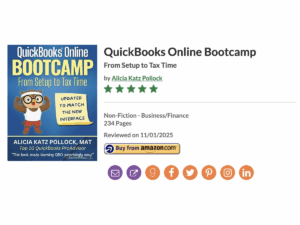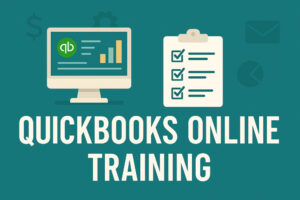Let’s be honest, managing products, services, and inventory can feel like wrestling an octopus. You’ve got tentacles everywhere – invoices, bills, purchase orders, reports – and it’s easy to feel overwhelmed, especially if you’re a small business owner or bookkeeper juggling multiple tasks. But QuickBooks Online (QBO) can be a powerful ally in this fight, and understanding how to utilize its features effectively can save you time, headaches, and ultimately, boost your bottom line.
This blog post dives into the core elements of managing products, services, and inventory in QBO. We’ll explore the setup process, uncover the accounting magic happening behind the scenes, and equip you with the knowledge to make informed decisions about your inventory management strategy.
Products & Services: The Building Blocks of Your Business
At its heart, your Products and Services list in QBO is the foundation for tracking what you sell, buy, and do. Whether you offer tangible goods, intangible services, or a mix of both, this list is the engine that drives your income forms (invoices, sales receipts) and can even be used to track profitability on your expense forms (bills, checks, expenses).
Setting Up for Success: Laying the Groundwork
Before diving into creating your products and services, it’s crucial to configure QBO to suit your specific needs. Here are some key areas to focus on:
- Sales Settings: Enable options like showing product/service columns on sales forms, tracking quantities and prices, and activating price rules if you offer different pricing structures to different customers.
- Expense Settings: Decide if you want to track expenses by customer (especially useful for job costing), make expenses billable to clients, and set up default markup percentages.
- Sales Tax: Ensure your sales tax settings are correctly configured, as this will impact how taxes are applied to your products and services.
- Chart of Accounts: Carefully consider your income and expense categories. While your Products and Services list can be highly detailed, your chart of accounts should focus on broader categories that reflect your overall business operations.
Building Your Products and Services List: From Simple to Complex
Now for the fun part! Let’s explore the different types of items you can create in QBO:
- Service Items: These represent intangible offerings, like consulting hours, design services, or even subcontracted labor. You can set them up with flat fees or hourly rates.
- Non-Inventory Items: These are tangible goods you sell but don’t track quantities of, like custom-made items or bulk purchases where individual tracking isn’t necessary.
- Bundled Items: Bundles combine multiple products and/or services into a single offering, streamlining your invoicing and simplifying complex sales. Think of it like a package deal – one price for a collection of related items.
- Inventory Items: This is where QBO’s inventory management features shine. Inventory items allow you to track quantities on hand, reorder points, and costs, providing valuable insights into your stock levels and profitability.
Navigating the Inventory Maze: Should You Track or Not?
The decision to track inventory in QBO isn’t always straightforward. Consider these factors:
- External Inventory Systems: If you already use a point-of-sale (POS) or e-commerce platform that manages inventory, avoid redundant tracking in QBO. Look for integrations that sync data between systems.
- Complexity and Resources: Inventory management adds a layer of complexity and requires dedicated time and resources. If your inventory is relatively simple and easily managed manually, you might consider doing periodic inventory adjustments instead of using QBO’s inventory tracking tools.
- Real-Time Data Needs: Do you need to know your exact stock levels at any given moment? Or is it sufficient to perform periodic inventory counts?
Alternative Approaches: When QBO Inventory Isn’t the Right Fit
If you decide against using QBO’s built-in inventory features, there are alternative methods to consider:
- Adjusting Entries: You can record all purchases as cost of goods sold (COGS) and then make periodic journal entries to adjust your inventory asset value based on physical counts. This is useful when you purchase a lot of components and turn them into finished products.
- Margin-Based Adjustments: Another approach is to record all purchases as inventory assets and then periodically adjust COGS based on your estimated sales margin. A physical count at the end of the year helps reconcile any discrepancies. This option is preferable when you purchased finished goods for resale.
Essential Inventory Management Tools: Keeping Track of Your Goods
QBO offers several tools to help manage your inventory effectively:
- Inventory Quantity Adjustments: Use this tool to reconcile differences between your recorded inventory and physical counts, accounting for shrinkage, damage, or theft.
- Inventory Valuation Summary & Detail Reports: These reports provide snapshots of your current inventory value and detailed transaction history for each item.
Beyond the Basics: Sales Reports and Third-Party Apps
To truly harness the power of QBO, explore the insightful reports it offers:
- Profit & Loss by Product/Service: This report breaks down your income and COGS by individual items, providing valuable insights into your profitability.
- Sales by Product/Service Summary: This report reveals which products and services are your top performers, allowing you to make informed decisions about your offerings.
When QBO’s built-in features aren’t enough, a wealth of third-party apps can extend its functionality:
- SOS Inventory & Katana: SOS Inventory and Katana are both popular options for businesses needing more advanced inventory management features like assemblies, backorders, and barcoding.
The Future of Inventory Management in QBO: Exciting Developments on the Horizon
Intuit is actively developing QBO’s inventory capabilities, with exciting features like variants and a more robust commerce center in the pipeline. These advancements promise to streamline inventory management even further, making QBO an even more powerful tool for businesses of all sizes.
Ready to Take Control of Your Products, Services, & Inventory in QBO?
Managing products, services, and inventory doesn’t have to be a daunting task. By understanding the intricacies of QBO and implementing the right strategies, you can streamline your workflows, gain valuable insights into your business performance, and ultimately, achieve greater success.
Want to learn more about mastering products, services, and inventory in QuickBooks Online? This article is just a quick summary of everything I teach in my full course, including step-by-step demos. Click here to enroll in my comprehensive online class and take your QBO skills to the next level!
Why Choose my Products, Services, & Inventory in QBO course: Real Success Stories
Here’s what others have to say about our course on managing products, services, and inventory in QuickBooks Online! The glowing reviews emphasize how beneficial this training is for those aiming to master these essential aspects of QBO.
Whether you’re new to inventory management or looking to refine your skills, this course delivers practical insights and expert guidance. With detailed instructions and clear examples, you’ll acquire the knowledge and confidence to optimize your QBO setup and enhance your business operations. Don’t just take our word for it—see why our participants highly recommend this transformative learning experience!





